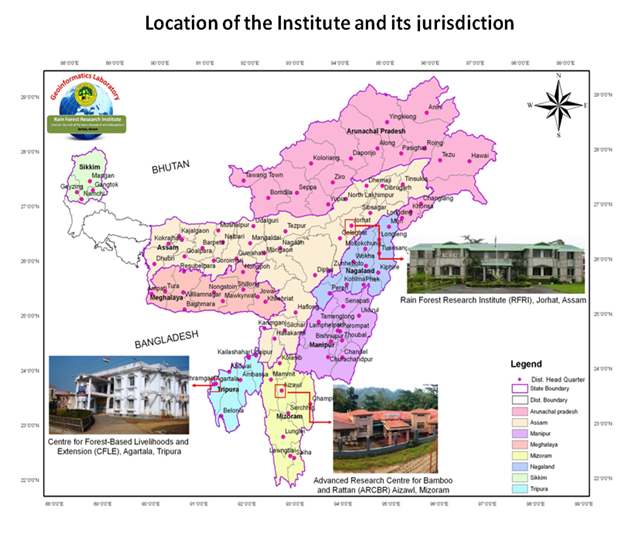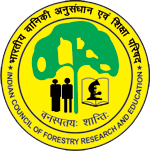Incidence and management of culm rot and bamboo blight disease in Assam
Culm rot and bamboo blight is a major disease of bamboo affecting bamboo plantations in Assam. Survey carried out in different agroclimatic zones of Assam. The highest disease percent of 55.26 in Bambusa balcooa was found in Bongaigaon district. The causal organism was found to be identified as Fusarium udum Butler. Field experiment revealed Bavistine (0.1%) as the most effective fungicide against the disease.

Assessment of insect pest problems of selected bamboo species in Assam and their management:
Infestation poses a major problem in bamboo cultivation particularly in nurseries. Antonina sp., Psara licarsisalis, Crocidophora sp., Pyrausta coclesalis, Hexacentrus unicolor and the aphid Ceratovacuna silvestrii were categorized as major pests. The efficacy of the native pathogenic bacteria Bacillus sp. isolated from the infected larvae of P.coclesalis, Neem oil, Acorus calamus rhizome powder methanol extract and the botanical pesticides Adhatoda vasica leaf aquous extract were evaluated against the key pests of Bamboo species and found effective in control the pests in both lab as well in field condition.
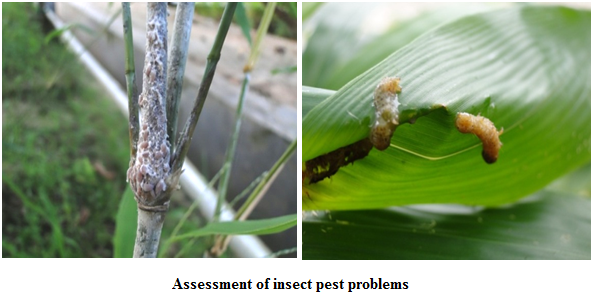
Khasi pine mortality in Manipur:
Khasi pine mortality is a major problem of pine forests in Manipur and Meghalaya.Surveys were carried out in Shillong (Jowai) and Manipur (Ukhrul) where maximum of 40% and 100% of disease incidence were recorded in Khasi pine respectively. Bavistin @ 0.2% was found to be effective in checking further spread of the disease.
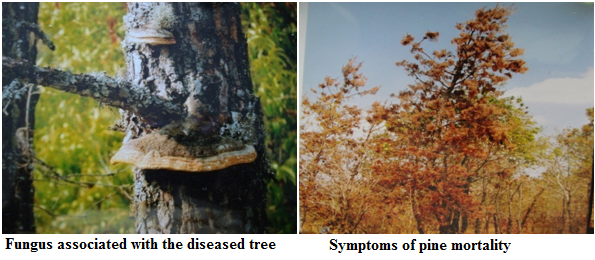
Parkia mortality in North east India:
Studies on investigation of Parkia roxburghii, popular tree legume of North East India revealed Coptops aedificator , long horn beetle as major cause of the disease. The fungus Fusarium sp. is also found to be associated with the disease. Painting of mixture of malathion 50% EC : lime powder (1:10) followed by spraying of carbendazim was found to check the further spread of the disease.
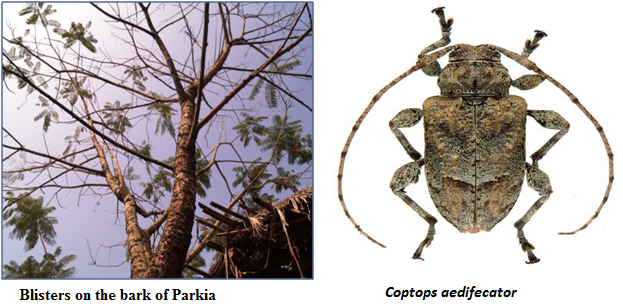
Genetic improvement of Gmelina arborea:Gmelina arborea commonly known as Gamari in Assam is widely distributed in North East. The wood is one of the best timbers of the tropics, used in making of furniture, particle board, ply wood and has got good pulping properties. The wood is also used in carving, handicrafts, musical instruments and other ornamental works. Genetic improvement programme is taken up to exploit the variations existing in this region. Survey was conducted and 119 candidate plus trees were selected from the North Eastern region. These selected trees were used to establish Clonal trials at Assam, Manipur and Tripura. The progenies of the selected trees were established for establishment of Progeny trials at Assam, Manipur and Tripura. Assam, Arunachal Pradesh, West Bengal and Mizoram. These clonal trials and progeny trials are serving as clonal and seedling seed orchards for quality seed production.
Genetic improvement of Dipterocarpus retusus: Dipterocarpus retusus commonly knowns as Hollong is found in Assam and is most widely used by plywood industries. The population strength came down due to large felling to cater the plywood industries. The improvement programme was taken up to provide quality propagules for raising quality plantations. 46 Candidate plus trees were selected from different parts of North east. The Progenies from 46 selected trees were used for establishment of progeny trials at three locations in Assam and serve as seedling seed orchards
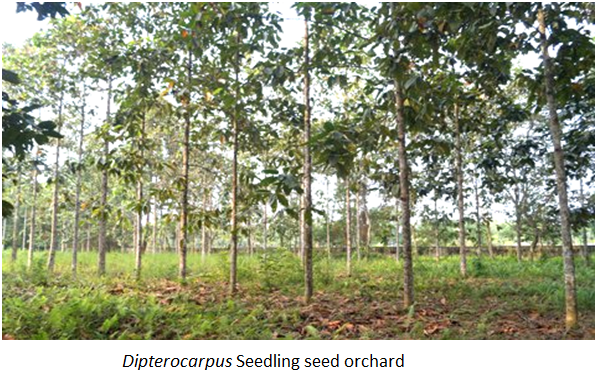
Genetic improvement of Magnolia champaca:Magnolia champaca commonly known as champaka (Titasopa in Assames), belonging to family Magnoliaceae is one the most important timber tree, often used as material for furniture and indoor works. Beside high timber value champaka is well known for traditional system of medicine. The various pharmacological study of M. champaca reported to have anti-microbial, antioxidant, anticancer, anti-inflammatory and antipyretic activity. Survey was conducted in Assam, Arunachal Pradesh, Mizoram and Tripura and plus trees were selected. 17 trees were selected and the progenies obtained were established as seedling seed orchard at RFRI Jorhat.
Genetic improvement of Aquilaria malaccensis: Aquilaria malaccensis, known as agar, produces the agarwood, which is highly economical. The vast distribution of this species in Assam and other North east states is brought down for its agar wood. The tree is valuable only when it produces the agar i.e. oleoresin. The variations existing in the quality of the oil need to be taped by exploiting the genetic variations and developing techniques. 55 trees were selected from different North East region and germplasm bank was established at RFRI, Jorhat.
Genetic improvement of Melia dubia:Melia dubia is one of short rotation tree species widely used in plywood industries. Due to its wide adaptability, the species is grown in different form of land in India. RFRI has taken up the activity of evaluating the different genetic sources of M. dubia alongwith the selection from North East India. The performance trials of M. dubia with 78 families in RFRI and a trial with 40 accessions at Tizit, Nagland are established. These trials will provide information on best parent tree suitable for this location and provide raw material for ply wood industries
Genetic improvement of Bamboo: Bamboo, an important natural resource in Northeast India, plays a significant role in rural economy. It also provides social, cultural and environmental security to the people of NE India. 56 species of bamboo under 15 genera are found in Northeast India. The variations exists within the bamboo species were identified during various surveys, they were collected and marked as accessions. About 200 accessions belonging to different bamboo species are conserved in the bambosetum. Moreover, 49 species were conserved and established in the bambusetum at RFRI, Jorhat.

Ecological studies on butterflies of Arunachal Pradesh: Ecological studies on the distribution patterns and food plant resources of butterflies along altitudinal gradients in different forest ecosystems of the Eastern Himalayas were done during 2011- 2015. A total of 414 species belonging to 5 families were found. A GIS based butterfly atlas was prepared.
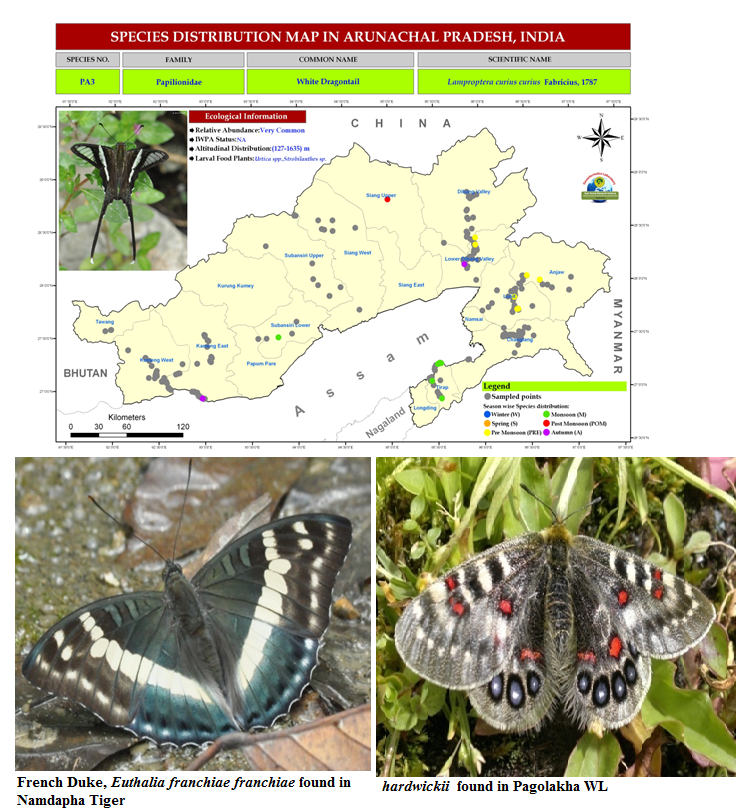
Assessment of mushroom diversity in Nagaland: The Northeastern region of India is rich in mushroom diversity. RFRI carried out complete survey of mushrooms in Nagaland and Meghalaya. A total of 120 species were identified from Nagaland and 138 species from Meghalaya. Of which, 18 are new reports for India. The selected species were analyzed for proximate analysis of nutritional values. The protein content varies from 22.50-44.93% and 32.43-52.07% carbohydrates were recorded in selected species. A book entitled "Mushroom of Nagaland" have been published in 2014.
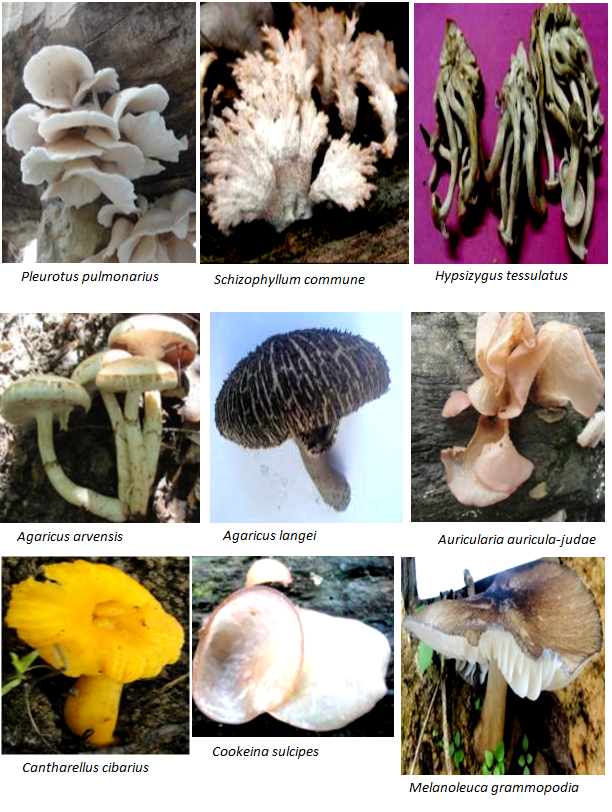
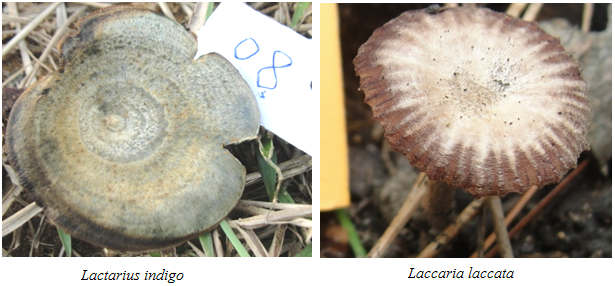

A new species of fungus Lysurus habungianus sp. nov. Gogoi & V. Parkash; MycoBank No. MB 812277 was described from Assam
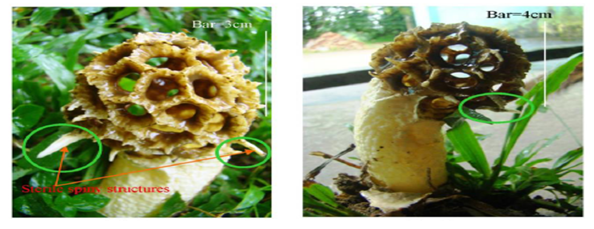
Distribution of Garcinias :The distribution of different species of Garcinia (Cluciaceae) and its ecology, utilization in the upper Brahmaputra valley of Assam were studied. Garcinia dulcis was reported in India first in Jokai Reserve Forest in Assam. The present study recorded three additional distribution locations at Jeypore RF, Tinkupani RF and Gibbon WL Sanctuary.

Adhesive materials from plants as substitute of Jigat for Agarbatti Industry:
Two new combinations of plant based natural adhesive have been developed.
1-Dried leaf powder from five plant species viz., Actinodaphne angustifolia, A. obovata, A. lowsoni, Grewia multiflora Juss. and Hibiscus rosa chinensis.
2-Dried bark powder from three plant species i.e. Litsea cubaba, L. sebifera and Cinnamomum zeylenicum .
The above mixtures in standardized ratios form a good alternative to Jigat for making incense sticks. The compositions have been tested for suitability for using both in hand rolled and machine made agarbatti. The developed alternative Jigat composition species reduces the pressure on the species popularly used for making Jigat.
Value added products from wild fruits:
Twenty one value added products were prepared from selected fruit tree species viz., Carallia brachiata Vern : (Ass) Kau thekera; Crataeva magna, Vern : (Ass) Borun; Spondius axillaries Vern : (Ass) Mitha Omora; Dillenia indica, Vern : (Ass) Ou-tenga , Garcinia pedunculata Vern: (Ass) Borthekera and Flacourtia jangomas Vern: (Ass) Poniol. Performed laboratory works on estimation of nutritional value of prepared 21value added products and the shelf life of the prepared products were evaluated after three months of interval. The prepared value added products were evaluated with respect to olfactory sensibility of consumers.
Evaluation of nutritional value of Cane shoots :
Nutritional value of young shoots of two rattan species: Calamus flagellum and C. floribundus that are used as vegetable by local communities were evaluated. The rattans shoots are rich in proteins, carbohydrates, minerals, calories and dietary fibres in comparison with other leafy vegetables and bamboo shoots, as reported in other edible rattan species. The low level of sodium, negligible amount of fats and the presence of high levels of vitamin B complex make the rattan shoots more nutritious.
Agroforestry systems:
Agro forestry has the potential to improve livelihood as it offers multiple alternatives and opportunities to farmers. This practice is now recognized widely in assuring food security, reducing poverty and enhancing ecosystem resilience at the scale of thousands of smallholder farmers. Agro forestry models intended to take under practice in a particular area, need to be weighted up on two basic criteria i.e. adoptability and sustainability. Interventions of RFRI, Jorhat towards Agroforestry are summarized as follows:
1 - King Chilli- Mangium agroforestry model :
King chilli as an intercrop with Acacia mangium is a popular model for agro forestry. Survival of hottest chilli was observed to be 16 times better in comparison to the monoculture. A. mangium , the fast growing plant is known as the poor man’s teak and it has also great economic value. The plantation activities were carried out simultaneously in RFRI demo village

2 -Patchouli - Mangium agroforestry model :
Patchouli (Pogostemon cablin)-Mangium Agroforestry Model is also a promising model for generating extra income to the farmers. Acacia mangium is comparatively newly introduced tree species in the region. Growing Patchouli under A. mangium tree can be a profitable option to the conventional farming in the region setting up an optimum land use system. This model has prompted farmers of this region for its adoption considering the relative economic advantage over their traditional land use system.

3 -King chilli- Arecanut agroforestry model :
Areca nut is one of the important profitable crops and planted in most of the household in NE Region. Farmers receive a considerable extra income from the small block of areca nut plantation raised in their household. The trees are normally planted at a spacing of 5m x5m to 7mX7m depending upon the availability of the land. Because of its thin canopy, there is an advantage of raising intercrops beneath the tree. King chilli popularly known as Bhut jolokia is most preferred species as an intercrop under areca nut trees for providing immediate economic returns. The survival and growth of king chilii was better under areca nut trees in comparison to its monoculture. The model is proved to be a successful model for generating additional income to the farmers. It has become the most popular model as more than 60% farmers are cultivating King chilli under areca nut trees, a space which was otherwise not being utilized for any purpose.
Post harvest treatment of bamboo :
Post harvest preservative treatments of bamboo have been found effective in enhancing the durability of bamboo and its products during use and storage. Among the various preservative treatment methods, Boucherie Process is the most preferred and widely used method for bamboo treatment. A Boucherie Apparatus has been developed in Rain Forest Research Institute, Jorhat named as JAGRITI for rural use. It has also been patented. It has been further modified to increase the capacity and the apparatus is named as PRAGATI. It is a simple cylindrical apparatus and easy to handle. It can treat 10 metre long bamboo poles in less than 30-35 minutes. The working cost depends on the preservative used and the number of preservative outlets.
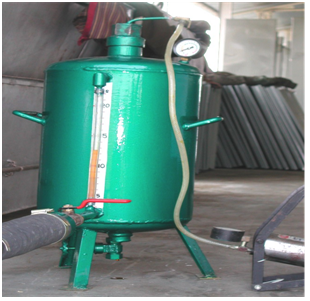
Artificial induction of Agarwood in Aquilaria malaccensis through fungal technology:
Agarwood, the most expensive wood in the world, is formed in Aquilaria malaccensis an aromatic and medicinal plant, endemic to North East India. Agarwood is mostly used in the perfume industry as fixative. In nature, only 10% of these trees are infected. Moreover, it takes more than 15 years for natural infection to occur. Keeping this in view, RFRI has successfully developed a technology for artificial induction of agarwood in 6-7 years old trees through fungal cultures.

